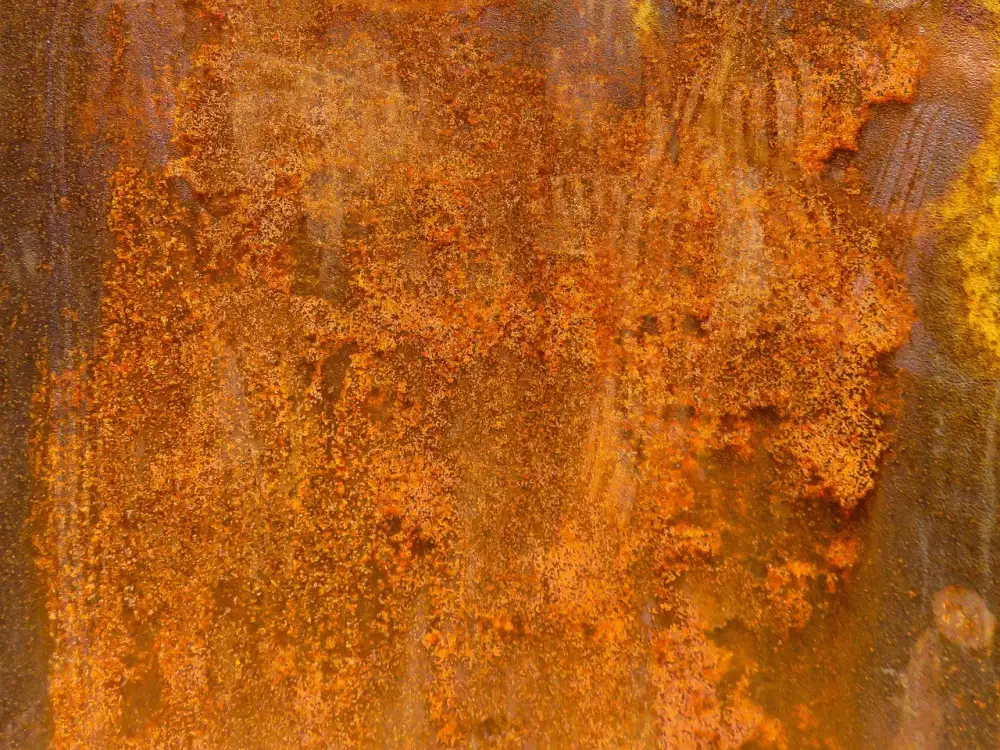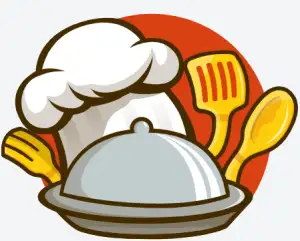Restore Your Rusty Cast Iron Skillet: Expert Tips on How to Clean and Revive Your Kitchen Essential

A cast iron skillet is a timeless kitchen essential that can last for generations if properly cared for. However, over time, these versatile cooking tools can develop rust, diminishing their functionality and appearance. Restoring a rusty cast iron skillet may seem like a daunting task, but with the right materials and techniques, you can bring it back to life. In this article, we will guide you through the step-by-step process of cleaning and reviving your rusty cast iron skillet. By following our expert tips, you'll be able to unleash your culinary creativity once again with this beloved kitchen tool.
Why cast iron skillets rust
Cast iron skillets are prone to rust due to their composition. Unlike other types of cookware, cast iron is made primarily of iron, which is highly susceptible to oxidation when exposed to moisture and air. When the protective layer of seasoning on the skillet wears off or is not properly maintained, the iron surface becomes vulnerable to rust formation. Additionally, acidic foods can also contribute to rusting by breaking down the seasoning and exposing the iron underneath. It is important to understand why cast iron skillets rust in order to effectively clean and prevent rust in the future.
Materials needed for cleaning
Materials needed for cleaning a rusty cast iron skillet include:
1. Coarse salt: This acts as an abrasive to help remove rust and grime from the skillet's surface.
2. Vegetable oil or shortening: This is used to create a protective layer on the skillet after cleaning.
3. Scrub brush or sponge: A non-abrasive scrub brush or sponge will help in removing rust without damaging the skillet.
4. Paper towels or clean cloth: These are required for drying the skillet after rinsing.
5. Hot water: Used for rinsing off the salt and any remaining residue from the cleaning process.
These materials, when used correctly, can effectively restore your rusty cast iron skillet to its former glory.
Step-by-step instructions for cleaning a rusty cast iron skillet
4.1. Preparing the skillet: Start by removing any food residue or debris from the skillet. Use a stiff brush or sponge to scrub away any loose particles.
4.2. Removing loose rust: If there is significant rust on the skillet, you can use steel wool or a wire brush to gently scrub away the rust. Be careful not to damage the surface of the skillet.
4.3. Scrubbing with salt and oil: Sprinkle a generous amount of coarse salt onto the skillet. Then, pour a small amount of vegetable oil onto the salt and use a paper towel to scrub the surface in circular motions. The salt acts as an abrasive while the oil helps to lift off any remaining rust.
4.4. Rinsing and drying the skillet: Rinse the skillet thoroughly with warm water to remove all traces of salt and oil. Make sure to dry it completely using a clean towel or by placing it over low heat on your stovetop.
4.5. Seasoning the skillet: To prevent future rusting, it's important to season your cast iron skillet after cleaning it. Apply a thin layer of vegetable oil or shortening all over the surface, including the handle, using a paper towel or cloth. Place it upside down in an oven preheated to 350°F (175°C) for about an hour, then let it cool in the oven before storing.
By following these step-by-step instructions, you can effectively clean and revive your rusty cast iron skillet, ensuring its longevity and optimal performance in your kitchen.
1. Preparing the skillet
1. Preparing the skillet: Before you begin cleaning your rusty cast iron skillet, it's important to properly prepare it. Start by removing any food residue or debris from the surface of the skillet. You can use a stiff brush or sponge to scrub away any stubborn particles. Next, rinse the skillet with warm water to remove any remaining residue. It's important to note that you should never use soap when cleaning a cast iron skillet, as it can strip away the seasoning and promote rusting. Once rinsed, pat the skillet dry with a clean towel. Now your skillet is ready for the next step in the cleaning process.
2. Removing loose rust
Before you can effectively clean a rusty cast iron skillet, it's important to remove any loose rust that may be present. This step is crucial as it allows for better penetration of the cleaning materials and ensures a more thorough cleaning process.
To remove loose rust, start by using a stiff brush or steel wool to scrub the surface of the skillet. Gently scrub in circular motions, applying light pressure to avoid damaging the skillet. The goal here is to loosen and dislodge any loose rust particles.
Continue scrubbing until you've removed as much loose rust as possible. You may need to repeat this step several times, especially if the skillet has significant rust buildup.
Once you've removed all the loose rust, proceed to the next step of the cleaning process: scrubbing with salt and oil.
3. Scrubbing with salt and oil
Once you have removed the loose rust from your cast iron skillet, it's time to give it a thorough scrub using a combination of salt and oil. This step helps to further remove any remaining rust particles and also acts as a natural abrasive to clean the surface.
To begin, sprinkle a generous amount of coarse salt onto the skillet. The salt will act as a gentle scrubbing agent without damaging the seasoned layer of the skillet. Use a dry cloth or paper towel to spread the salt evenly across the surface.
Next, pour a small amount of vegetable oil or any other cooking oil onto the salted surface. The oil helps in loosening stubborn rust spots and prevents further oxidation.
Using a folded paper towel or a soft brush, start scrubbing the skillet in circular motions. Apply gentle pressure to ensure that all areas are thoroughly cleaned. Focus on areas with visible rust or stains, giving them extra attention.
Continue scrubbing until you feel that most of the rust has been removed. You may need to repeat this process multiple times for heavily rusted skillets.
Remember not to use any harsh chemicals or abrasive cleaners during this process as they can damage the seasoning of your cast iron skillet.
Once you are satisfied with the results, rinse off the salt and oil mixture under warm running water. Make sure to remove all traces of salt to prevent any potential corrosion in the future.
After rinsing, pat dry your skillet using a clean towel or paper towels. It is crucial to completely dry your cast iron skillet as moisture can lead to rust formation.
Now that your cast iron skillet is clean and dry, proceed to the next step: seasoning it properly to restore its non-stick properties and protect it from future rusting.
4. Rinsing and drying the skillet
4. Rinsing and Drying the Skillet:
After scrubbing the skillet with salt and oil, it's important to thoroughly rinse off any remaining residue. Use warm water and a sponge or brush to gently remove all traces of salt and oil from the skillet. Avoid using soap as it can strip away the seasoning.
Once rinsed, carefully dry the skillet with a clean towel or paper towels. It's crucial to ensure that no moisture remains on the surface, as this can lead to rust formation. To be extra cautious, you can place the skillet on low heat for a few minutes to evaporate any lingering moisture.
Remember, cast iron is prone to rusting when exposed to water for extended periods, so it's essential to dry it completely before storing. Proper drying will help maintain your skillet's longevity and prevent future rusting issues.
5. Seasoning the skillet
Once your cast iron skillet is clean and dry, it's important to season it to prevent future rust and maintain its non-stick surface. Seasoning creates a protective layer on the skillet that helps to keep moisture out and prevents food from sticking.
To season your skillet, follow these steps:
1. Preheat your oven to 350°F (175°C).
2. Apply a thin layer of vegetable oil or melted shortening to the entire surface of the skillet, including the handle.
3. Place the skillet upside down on the middle rack of the oven with a baking sheet or aluminum foil on the lower rack to catch any drips.
4. Bake for one hour.
5. Turn off the oven and let the skillet cool completely inside before removing it.
6. Repeat this process two more times for optimal seasoning.
Remember not to use too much oil as it can become sticky and create a gummy residue on your skillet. The goal is to create a smooth, shiny surface that will enhance its non-stick properties.
Regularly seasoning your cast iron skillet after each use will help maintain its longevity and prevent rust from forming in the future. It's also essential to store your skillet in a dry place to avoid any moisture buildup.
By following these steps, you can restore your rusty cast iron skillet back to its former glory and enjoy cooking with this versatile kitchen essential for years to come.
Tips for preventing rust in the future
1. Dry thoroughly: After cleaning your cast iron skillet, make sure to dry it thoroughly. Moisture is one of the main culprits behind rust formation, so ensure that there is no trace of water left on the surface.
2. Apply a thin layer of oil: To create a protective barrier against moisture, apply a thin layer of oil to your skillet after each use. This will help prevent rust from forming and keep your skillet in top condition.
3. Store properly: Store your cast iron skillet in a dry place with good ventilation. Avoid stacking other cookware on top of it, as this can trap moisture and lead to rust formation.
4. Use regularly: Regular use of your cast iron skillet helps to maintain its seasoning and prevents rust from developing. Cooking with acidic ingredients like tomatoes or vinegar can also help remove any built-up rust.
5. Avoid soaking or prolonged exposure to water: Cast iron skillets should never be soaked in water or left submerged for extended periods. This can cause the protective seasoning layer to break down and increase the risk of rusting.
By following these simple tips, you can enjoy the benefits of cooking with a well-maintained cast iron skillet for years to come without worrying about rust formation.
Taking care of your cast iron skillet is essential to ensure its longevity and optimal performance in the kitchen. By following the step-by-step instructions provided in this article, you can effectively clean and revive a rusty cast iron skillet.
Remember to always prepare the skillet properly by removing any loose rust before scrubbing it with salt and oil. Rinse and dry the skillet thoroughly to prevent any moisture from causing further rusting. Lastly, seasoning the skillet with oil will create a protective layer that helps prevent future rust.
By incorporating these cleaning and maintenance practices into your routine, you can enjoy cooking with your cast iron skillet for years to come. So don't let rust discourage you - restore your trusty kitchen essential and unleash your culinary creativity!
Published: 22. 02. 2024
Category: Food



